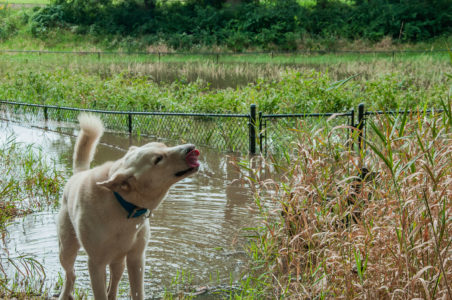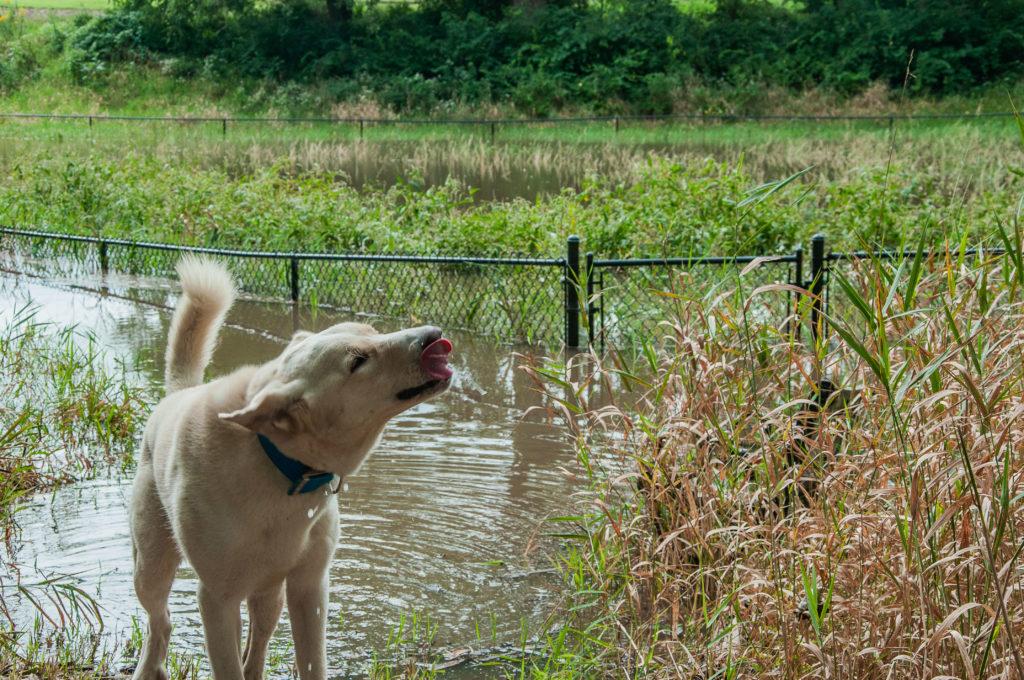By Chloe Wray
wraychlo@grinnell.edu
Professor Barry Driscoll, political science, starts each semester by asking his students to share an obscure fact about themselves. The fact he shares: “I built a dog park.”
The Poweshiek Animal League Shelter (PALS) Park dog park that Driscoll references, located on PALS property, opened its gates in November 2017. Creation and success of the dog park can largely be attributed to Driscoll’s efforts.
After moving to Grinnell in 2015, Driscoll became involved with PALS. Over time, his work as a volunteer transitioned to his serving on the organization’s Board of Directors.
“Around this time, I began thinking about the general absence of a dog park from our community. It’s a strange thing given we’re in a land-abundant part of the world to have no dog park, whatsoever,” Driscoll said.
As former residents of Madison, Wisconsin, Driscoll, his wife, Taylor Price, writing lab, and their dog Bea were accustomed to having access to multiple dog parks. Access to a dog park was an amenity they sought within Grinnel. After becoming acquainted with the local dog community via his work with PALS, Driscoll set out to determine the feasibility of creating one for the city.
Driscoll discovered that the city council had a dog park sub-committee. For almost a decade, this group had been working to build a dog park, only to be met with objections of “not in my back yard” each time a location for the park was proposed.
“Once you’ve got the space, the rest of it is pretty trivial,” Driscoll said, explaining the difficulties faced by the dog park committee. Based on obvious interest from community members, Driscoll proposed that PALS use a portion of its four acres to build a dog park, a process which started in spring of 2017.
Today, the park sits on two and a half acres behind the structure of the shelter. Beyond Walmart, the first right after passing under I-80 and then another right, locates the park as slightly out of town.
Worth the drive, the park is not simply a fenced-in field; its most prominent feature is a pond shrouded in oaks. The wooded area keeps wind levels under control while muffling noise from the nearby interstate. Trails circle the pond and the perimeter of the park, cutting through the woods and running alongside tall prairie grasses. Along the trails sit benches for dog-owners, and recently constructed agility structures sit in a mowed grass area.
Before the park, there were no fenced-off areas for PALS dogs to run. Instead, volunteers walked the dogs on leash, invariably doing little to release the animals’ pent up energy.
Hank, a large white dog who resembles a lab mix, is one of a dozen dogs currently at PALS. All dogs at the shelter are guaranteed time in the dog park at least once a day — most days they get to use the park twice. Off-leash, Hank explores the tall grass, jumping through the bramble, convinced he will catch the small animal he senses in the bushes. He does not tire of the park. Although small, the parks environment presents the dogs with a seemingly endless array of scents to sniff.
“Walks are not exercise for most dogs,” Driscoll said. “Walks are actually smells, that’s what walks are. They’re an opportunity to smell and become mentally stimulated.”
With the dogs able to roam freely through the park, their mental and physical wellbeing is greatly aided. Additionally, the park provides opportunities for young shelter dogs to interact and offers a space for potential adopters to meet the dogs.
“[The park] has been a huge advantage to the shelter,” Driscoll said, citing PALS as unique among shelters, few of which feature dog parks. While it has its benefits for the shelter, the park is ultimately intended for public use. Technically, the park is private and requires a $30 annual membership fee per household, though, Driscoll adds, “it’s public-spirited, but not legally a public park.”
Built entirely with funds raised through donations which Driscoll secured from individuals and businesses, the planning, building and opening of the park occured within six months.
Membership fees do not accrue as revenue, rather they go to fund ongoing costs such as insurance associated with the park. Employees of businesses who donate are granted access to the park on varying levels dependent on donation amount. Currently, PALS is still seeking donations to repay the final set of loans on the $40,000 project.
The dog park is open from dawn until dusk 365 days of the year, excluding the hours of 7:30-9 a.m. and 4:30-6 p.m. which are set aside exclusively for use by PALS dogs and staff.


Photo By Sarina Lincoln
Video by Veronica Thomas

























































